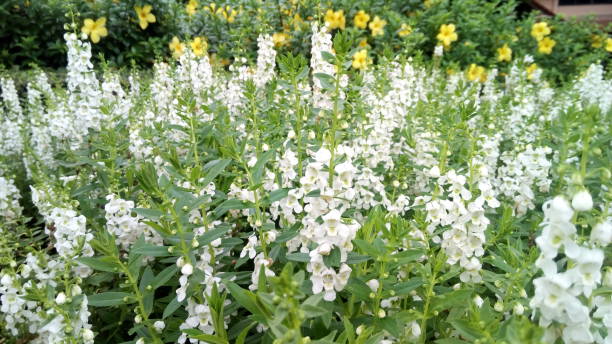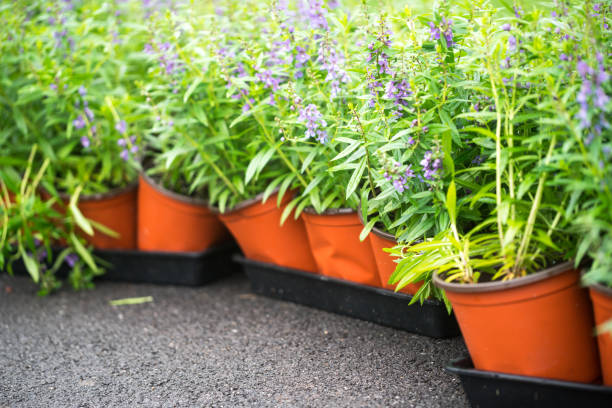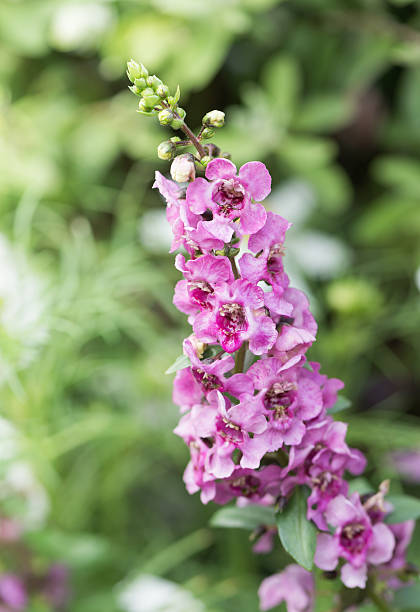How To Grow Angelonia?
There are a few things that you will need in order to grow Angelonia successfully: sun, water, fertilizer, and moderate temperatures. When planting Angelonia, know the best time to plant, where to plant, and how to plant. Fertilize them once a month with a balanced fertilizer and water them well. Keep the plants in a sunny location and away from direct heat or cold temperatures. Angelonia typically takes 4-6 months to reach maturity but can be harvested earlier if desired. Once the plants are mature, they can be cut down and divided into smaller pieces to create new plants. It’s a succulent native to the southwestern United States and Mexico. It is a perennial plant with glossy leaves that are green or blue-green in color. It’s a great addition to any succulent garden, as it can tolerate a wide range of soil types and climates.

Table of Contents
Planting Angelonia
Best Time to Plant
Ideally, you should plant your seeds in late spring after all danger of frost has passed.
Stem Cutting
- Angelonia can be easily multiplied through the use of stem cuttings.
- Take a 3-inch section of an angelonia stem and cut it off.
- Select a cutting that is devoid of any flowers.
- Remove all but the top two leaves from the cutting because the stem cannot support the additional leaves without a root system.
- Insert the cut end into moist potting soil and saturate it with the rooting hormone.
- If you keep the soil moist, your new plant will be ready to go into the garden when new leaves begin to appear.
Planting By Seeds
- Indoor seed germination begins six to eight weeks before the end of your frost season.
- Add some seed starter mix and gently press the seeds in.
- Don’t cover the seeds of Angelonia because they need light to germinate.
- Do not allow the soil to dry out on the soil’s surface.
- Using a heat mat may be necessary if the seeds don’t germinate in the 70-75°F (21.1-23.9°C).
- After 10 to 14 days, the seeds begin to sprout.
- When frost has passed, gradually introduce plants to the outside environment before planting them in the garden.
- Wait until there is no chance of frost before doing direct sowing outdoors.

Angelonia in Pots
They are ideal for container gardening because of their constant blooms and self-cleaning habits. Use Angelonia in your patio or pool planters to attract butterflies and hummingbirds. Compared to smaller containers, larger ones (at least 18 inches in diameter) will take longer to dry out.
Late spring is the best time to pot up your angelonias when the evenings are warm. To get the right acidity and drainage, use commercial potting soil. Annually grown angelonias don’t require repotting because their roots are so shallow. Spring is a good time to repot plants that have survived the winter.

Growing Requirements for Angelonia
For their hardiness and long blooming cycle, angelonia plants are a summer staple. The low-maintenance plants will welcome you back with blooms and attract pollinators to your sunny backyard haven even after a week away from the garden.
Light
To ensure that your angelonia plants have enough energy to bloom continuously, ensure that your plants receive direct sunlight for the entire day. Flowers will be sparse and leggy on plants that do not receive at least six hours of direct sunlight daily.
Soil
Angelonia plants are tolerant of a wide range of soil types, but soil rich in organic matter will reduce the amount of watering and fertilizing that needs to be done to maintain the plant. Since plants require good drainage to avoid root rot, grow Angelonia in raised beds or containers if your soil is heavy with clay.
Water
When it comes to drought, Water Angelonia plants are tough and will continue to produce flowers. When the top of the soil feels dry, it is time to water the plant. It is acceptable to provide additional moisture if the plants have adequate drainage.
Temperature and Humidity
High humidity and hot summer days are ideal for angelonia plants. Their natural habitat is in the deep South, where hot, humid weather prevails. A little extra watering will make angelonia plants thrive in the arid Southwest.
Fertilizer
It is recommended that you fertilize your angelonia plants once a month because they are light feeders. Too much fertilizer will result in an overabundance of foliage at the expense of blossoms. A balanced flower fertilizer that contains a timed-release mix of a 10-5-10 or 12-12-12 fertilizer can be used at planting time to eliminate the need to fertilize again afterward.
